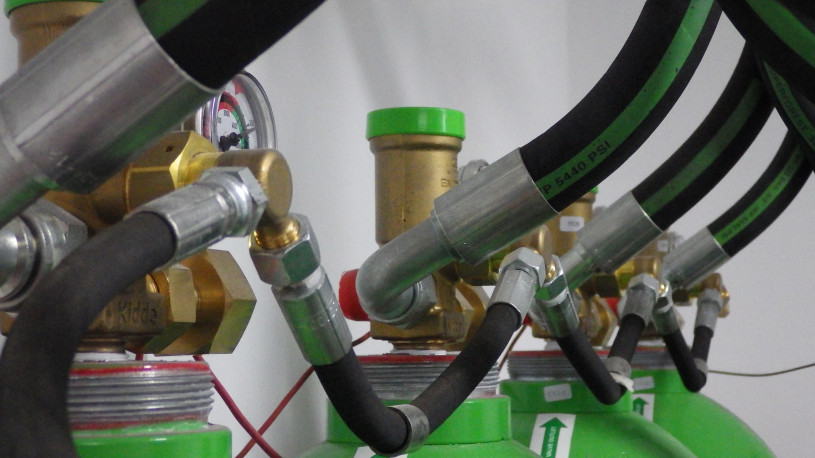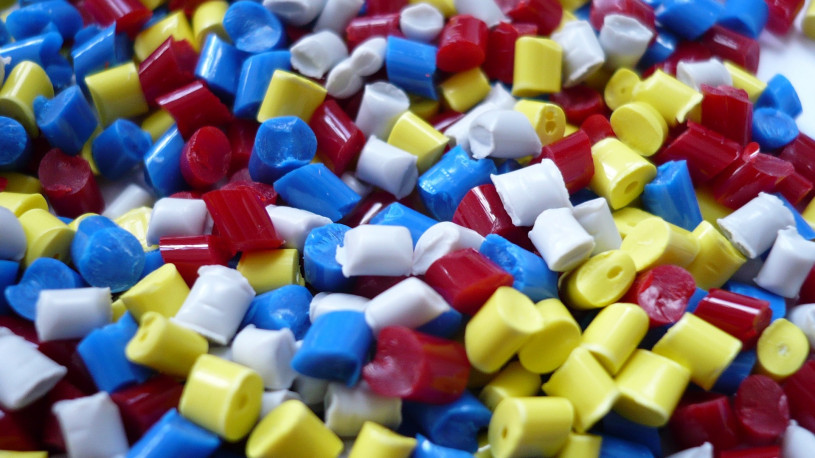-
Is Conversion of Waste Carbon Dioxide in Methanol Under Reduced Pressure and Temperature really a New Trend in Technology?
 Continue Reading
Continue ReadingRecently, there have been reports circling around the world about a significant change in direction in how to process the greenhouse gas carbon dioxide. The ‘new’ technique involves employing a catalyst that consists of clusters of copper anchored to suitable carrier, such as alumina.
Cluster are used, as they create a better catalytic environment than a compact copper surface, which results in a significant reduction in pressure by about 1.29 kPa and the temperature by about 225°C. Naturally, this has a significant impact on reducing the cost of conversion.
Current technology is based on the production of methanol by converting natural gas to a so-called ‘synthesize gas’, a mixture of hydrogen and carbon monoxide. The hydrogen is then obtained by a method called steam reforming.
It is important to remember that it is the first stage of methanol production that actually determines the economic viability of the entire production process.
As yet, researchers have not been able to find a technology that could make this phase more economically possible. Without such a method the economic viability of the subsequent conversion is brought into question.
At present, research has only resolved one step in make an improved process in the conversion of renewable gases at reduced costs. However, with greater publicity of these early advances, it is hoped that sufficient investors can be found to complete the work.
Because, as always, the speed of progress depends on the speed of investment.
-
Predictions for the Global Plastics Market to 2020
 Continue Reading
Continue ReadingThere has been much talk in recent years (including on this website) about the need for the plastics industry to go green. However, latest research indicates that whatever course of action the industry takes, in the short term at least, plastics are in the pink.
Simply put, the world needs them. Despite much of the population thinking that they are an unnecessary evil for the planet. It seems that plastics are here to stay. They are the world’s guilty pleasure.
In fact, all the indicators point to a very positive future for plastics, as developed markets seem unable to avoid using them, whilst developing markets are rushing towards consumer economies that need household goods, packaging and other consumables.
A fact that is agreed upon by all major research teams, many with some startling figures.
- 3% global plastics growth from 2013 and 2019 – Transparency Market Research.
- Global plastics market value of US$654 billion by 2020 – Grand View Research
- Global antimicrobial plastic market to grow by 10% to US$3.6 billion by 2020 – MarketsandMarkets.
- Engineering resin and polymer alloy/blend market to grow from US$38 billion to more than US$48 billion by 2020 – BCC Research.
So where is all this growth, where is the market?
Firstly, there are many new uses for plastics as they continue to replace other materials. Fifty years ago, could anyone have predicted that windows would be predominantly made of plastic, that cars would be more than 50% plastic (and how many more cars does the planet need in the coming decade?).
Who knew that plastics would be increasingly used in road and bridge construction, as well as in the pharmaceuticals industry and packaging. In fact, plastics manufacturers are already diversifying their portfolios, and are now expected to have as many as 30 products on offer by 2020, compared to today’s average of only 13.
But besides new applications, where is the money?
Primarily in Asia, where significantly Grand View Research states that the Asia Pacific region accounted for 44.6% of the global plastics market volume in 2013.
Here, not only are economies booming (increasing local demand), but exports are expanding too, as governments have created conditions favourable to investment and manufacturing. Tax benefits and financial incentives have supported the flow of foreign investment, whilst low labour costs have encouraged production to expand further. Whilst in many areas this has created overcapacity, this has merely driven prices down, further fuelling the world’s addiction to plastics.
India is also enjoying better times after a few years of business uncertainty. Now that the economy is growing in numerous sectors, the versatility of plastics means that it is set to see expansion in areas from construction to transport to packaging to consumables. Indeed, Kamal Nanavaty, president of strategy development at Reliance Industries Ltd predicts some phenomenal growth stating that, “rural income is expected to triple by 2020, to a total of US$1.8 trillion, and annual car production projected to grow from 1.7 million vehicles last year to 9.3 million by 2020.”
The Middle East is also doing well, as according to Gulf Petrochemicals and Chemicals Association (GPCA), “plastics production capacity in the Gulf Cooperation Council grew by 6% to 25.5 million tonnes in 2014 and is projected to increase by 25% to 33.8 million tonnes by 2020.”
An increase of 25% in 6 years, is truly remarkable, especially as such growth is predicted in so many areas. These include Polyethylene, where growth will be driven by increased demand for film and sheet products, injection moulding, pipe manufacture and food and beverage packaging.
Whilst Polyethylene terephthalate (PET) is expected to be the best performing segment of the market with predicted growth of 8.5% to 2020, caused in part by demand for carbonated soft drink packaging (when did you last drink Coke from a can?).
Significantly, North America and Europe, the two most mature markets are not expected to see significant growth. In fact they will both do well to avoid stagnating output in the coming years, caused by sluggish growth in home markets and increased competition from suppliers in other regions.
The best performing countries are expected to be in Central and South America. Both of these zones have low production costs, as well as good growth in industries that require plastics, such as automobiles, electronics, domestic appliances and construction. According to data from Transparency Market Research, the regions plastics industry will grow by 6.3% by 2020.
Whilst Brazil and Argentina has seen some troubling economic times of late, an increase in demand for cars in these two countries is supporting a recovery in the plastics market. Meanwhile, other South American countries all have healthy economies with places like Columbia, Chile and Peru all with plastics’ markets growing at in excess of 4%.
The Mexican petrochemicals market is also predicted to shine, increasing revenues from US$1.06 billion in 2013 to US$1.64 billion in 2020, according to consultants at Frost and Sullivan, with the biggest growth to be seen in the polybutylene terephthalate (PBT) and styrene-butadiene-styrene (SBS) markets, with respective growth rates of 11.3% and 8.7% from 2014 to 2020.
Certainly the industry does have some challenges ahead. It has a very poor public image and its production costs can be heavily dependent on the price of oil. That said, efforts are being made to find effective biodegradable plastics and to limit the amount of plastic sent to landfill. This can be seen in projects such as Plastics 2020, where European industry leaders are aiming to reduce the amount of plastics reaching landfill sites. Industry spokesmen are hopeful that 57% of plastics will be recycled by the target date of 2017.
Hopefully, initiatives like this can help the public to see a better side of the plastics, especially as it is an industry that will increasingly be supporting the world economy and offering so many new jobs in the coming years.
Whilst the global plastics industry is in a very strong position for the short to medium term. Long-term predictions are never easy, but with so many indicators and experts promising such spectacular growth, it seems that whether plastics go ‘green’ or not, the future is still very rosy.
-
The Challenges Facing Independent Chemical Traders
 Continue Reading
Continue ReadingThese are challenging times for independent chemicals traders. In fact, they are close to becoming an endangered species.
Whilst the chemicals industry, if analysts are to be believed, is due to embark on a few decades of growth as consumerism grips the developing world, the trading on the chemicals needed for that expansion is increasingly controlled by a handful of large corporations.
As economies of scale have influenced the production side of so many products, the power of money and the bargaining position that big business holds has led to the near extinction of the smaller businessman. The talented trader who could once use his networking skills and extensive contact list to make a deal is finding the margins smaller and smaller on each deal. The competition for many is too strong, and they are forced to join the corporate giant to ensure that the mortgage is paid, taking a lower position, with less pay and freedom for the sake of a guaranteed payday.
Unfortunately for the talented and self-motivated salesperson, the international conglomerate is keen to promote brand driven sales, where the company’s name, rather than the legwork of the sales rep, attracts business deals. By doing so they hope to save money (by paying lower commissions) and instead spend money on bigger, swankier offices and corporate branding, to the detriment of the smaller independent trader.
Thankfully, there is still room for expertise. A chemicals trader must still know his acetate from his acetone, as well as his REACH from his K-REACH. Plus there is the countless other trading rules and regulations, import restrictions, export duties and tariffs to consider (a situation that leads many smaller firms to focus on niche markets). Finally, there is also a minefield of logistics to factor-in, that sometimes not even the super computer ‘Deep Blue’ could fathom smoothly.
The Internet itself has become both a bane and a boon for smaller businesses in the chemicals’ trading world. It allows for the free spread of information, so that product prices in Moscow are also known, almost instantaneously, in Marrakesh. But the trader must still sift through the information, to find out what is worthy and what isn’t. In such a wealth of information the overall picture can get lost. The smaller business, if not careful, can be weighed down with over-information.
Online trading platforms meanwhile, whilst seeming to be in their second infancy (please see the earlier blog article on this topic; https://blog.spotchemi.com/will-the-way-we-trade-chemicals-ever-change/) have yet to show whether they will be a help or a hindrance to the independent trader. On the face of it, they will drive down costs, so that it is no longer necessary to be trading chemicals in a city that acts as a trading hub, as the trading floor is now a virtual one. But this benefit also supports the bigger player, whose trading overheads are much larger. The removal of these costs, places more emphasis on the power of negotiation.
In an online world, negotiation has become less of an art form, enjoyed over cocktails, and more of a science, employed over calculators.
A similar shift in how things are done, can be seen in the way that Texas Holder Poker has moved online, removing the art form of reading a players hand through his facial expressions.
But skill in online poker still remains, and if there is skill, then there is room for individual talent, determination and drive. So surely the future is bright for independent traders. Whether they decide to network, build up the Rolodex of contacts or take the route of using an online trading platform, chemicals are still needed (maybe more so than ever before) and that means that someone will be needed to buy and sell them.
